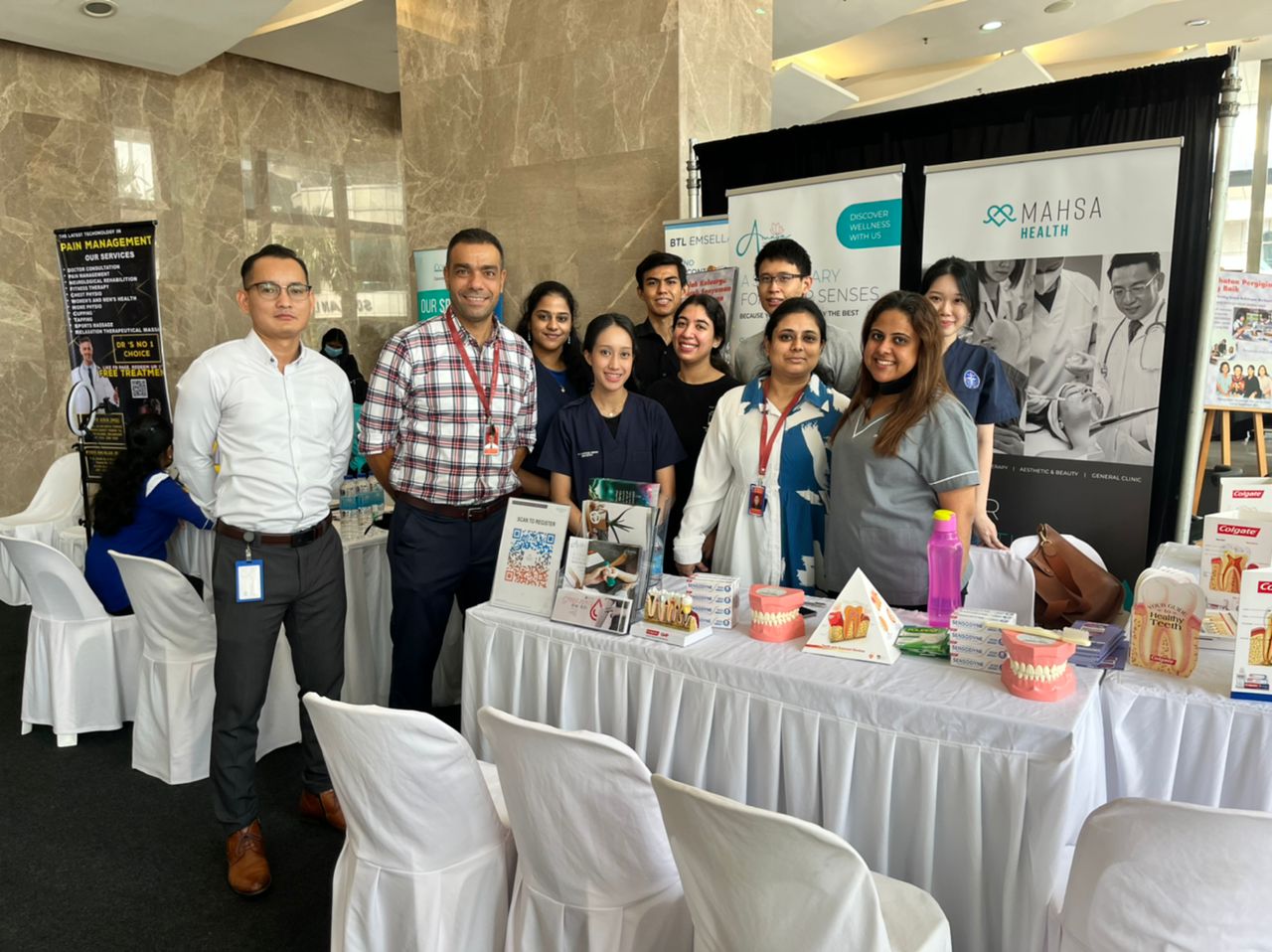In
conjunction with BHP Petroleum
OSHE Week Programme 2022 Corporate Office Safety & Health Day 2022 an Oral Health screening by the post graduates and Year 5 Doctor
of Dental Surgery students under the supervision of the Dental Public Health
lecturers was held in collaboration with Avisena Specialist Hospital, Cardiac
Vascular Sentral Kuala Lumpur, Bless Healthcare Sdn Bhd, MSU Medical Centre,
MAHSA Health Sdn Bhd, InBody Asia Sdn Bhd, and Fruit Garage. The event also
provided Biometric health screening, Musculoskeletal
screening, Vision screening, Body Composition Analysis screening, and Heart Disease screening.
Oral health-related quality of life (OHQoL) is conceived as a
multidimensional construct. Oral health is equally important as overall
health. Marcenes and
Sheiham and Green et al. reported that increased work stress was associated
with poorer oral health status and particularly with poorer periodontal status.
Previous research has shown that stress can also impact the quality of life
(QoL)7–9. A previous study by one of the present authors showed that high
stress was related to poor oral health related QoL (OHRQoL) in a sample of
dental patients.
Another study concluded that the poor oral health and a lack of
good oral health attitudes may have negative impact on the oral health related
quality of life (OHRQoL) of working adolescents. Dental health education
programs in collaboration with schools and dental health services may be
beneficial for promoting oral health and improving the OHRQoL of working
adolescents.
Oral diseases,
such as untreated caries, severe periodontitis, and severe tooth loss, were
listed among the top 100 Global Burden Diseases in 2010. The clinical aspects
of oral health have been thoroughly investigated in epidemiological surveys.
However, less is known about the impacts of oral health on quality of life.
Recent results reveal that poor oral health may limit daily activities and loss
of work due to oral disease has been documented. To capture the subjective
aspects of oral conditions on the welfare of individuals, oral health related
quality of life (OHRQoL) measures have been increasingly used in
epidemiological investigations.
According to the
World Health Organization (WHO), the definition of quality of life (QL) is
“individuals’ perception of their position in life within the culture context
and value system they live in, considering their goals, expectations,
standards, and concerns.”7 One of the instruments most frequently used to
measure the impact of OHRQoL is the oral health impact profile (OHIP).5 The
OHIP, developed to assess impacts on OHRQoL, is based on a conceptual model by
Locker4 that considers seven dimensions: functional limitation, physical pain,
psychological discomfort, physical discomfort, social disability, psychological
disability, and handicap. Good health enables people to participate in all the
physical, social, and psychological dimensions of their daily activities,
including work.
This outreach programme will help employees detect tooth decay, gum
disease, and other oral health problems early, when they are easier to treat. Oral
Health promotion activities will be carried out to help educate employees on
the best ways to care for their teeth and gums.
This outreach programme helped employees detect tooth decay, gum
disease, and other oral health problems early, when they are easier to treat. Oral
Health promotion activities were carried out to help educate employees on the
best ways to care for their teeth and gums.


.jpeg)

.jpeg)

